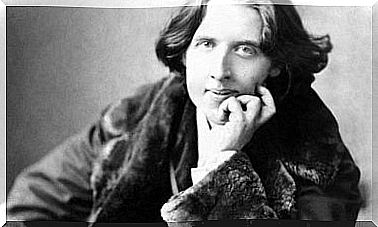The Pleasure Theory: Rewards Work Better Than Punishments

It wasn’t that long ago that we lived in a world where punishment was believed to be one of the important parts of education. Education consisted of restraining while the person acquired the ability to self-limit. This has been greatly re-evaluated and with pleasure theory it is clear that in many cases there are more effective methods.
It is true that human beings come into the world with very egocentric behaviors. To learn to live in society, we must gradually give up the idea that we are the center of everything and that all our desires must come true.
The pleasure theory states that people are more willing to perform actions that can be considered “boring” when it involves an entertainment experience.
In other words, a positive stimulus can become a great incentive to abide by certain rules or to adopt behaviors that are desirable for society.

The origin of the theory of pleasure
The theory of pleasure appeared in 2009 and has not only appeared in academia. The Volswagen company commissioned an experiment to prove it worked. Halfway between marketing and social responsibility, this automotive giant wanted to prove that social and individual change is possible as long as there is an incentive to achieve it.
Volswagen launched his Fun Theory , or Theory of Pleasure, to inspire people to lead fuller lives. Obviously, by the way, they also consolidated their brand image. What they did was come up with a series of social experiments to observe people’s reactions.
All of these experiences presented a dilemma for people. There were two options: one which relied on comfort and habit, and the other which aimed to require some effort, but in turn involved a different and fun experience. Let’s see what happened.
The first of experiments
The first social experiment carried out was very simple, but also very revealing. It took place in a very busy place: Sweden’s most popular metro station. There was an escalator and a conventional staircase next to it. The question was: How do you get people to use the conventional staircase and get exercise?
They came up with a funny answer. Indeed, they invented what has been called “the piano staircase”. They painted the conventional staircase as if it were a piano and made a sound emit when you walked on each step, as if you were playing a musical instrument.
The result was surprising. Normally, 95% of people used the escalator to go up. With the piano staircase, 66% of passers-by chose to make the effort to go up on foot. Besides, they looked very happy to do it. This proved, in principle, that the pleasure theory worked.

Other experiences
The second experiment to test the pleasure theory was even more successful than the first. Many people throw their garbage on the ground, and they do so without hesitation. A new test was therefore proposed, also in Stockholm.
What they did was install trash cans with a special sensor. Every time a person threw trash in the trash can, there was a noise like those in cartoons when something falls off a cliff. People found it extremely funny and not only did they throw the garbage where it needed to be, but they also picked up other garbage that was there to throw it away.
In just one day, garbage collection almost doubled. Once again, pleasure theory has been shown to be helpful. So far, however, this theory has been approached as part of the marketing and business environment. It was also based on short-lived experiments, with no guarantee that the effects could be sustained over time.
The big question is whether it would work the same on larger issues and whether it is capable of generating long-term sustainable behavior changes. There is no data on this subject yet. Despite this, gambling has been proven once again to be a factor with extraordinary persuasive power. Novelty and fun are strong enough stimuli to encourage us to improve.










